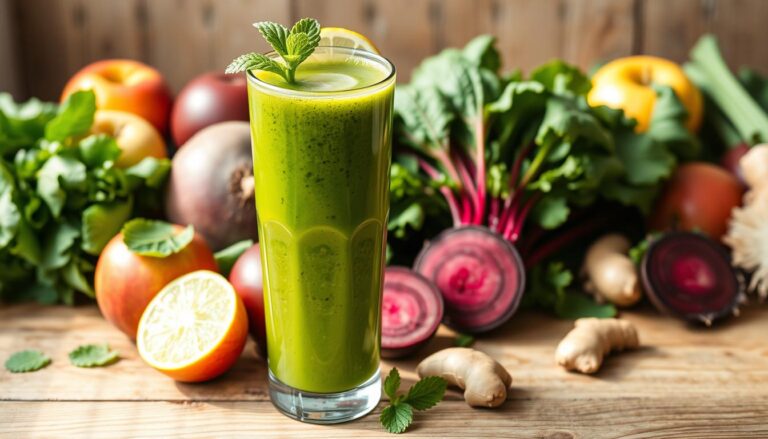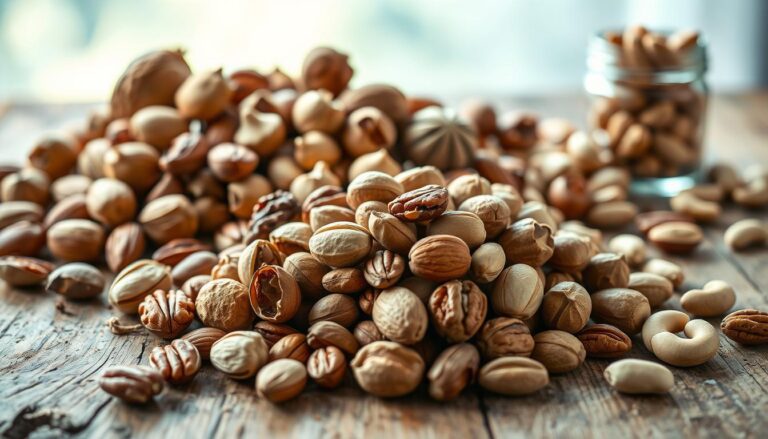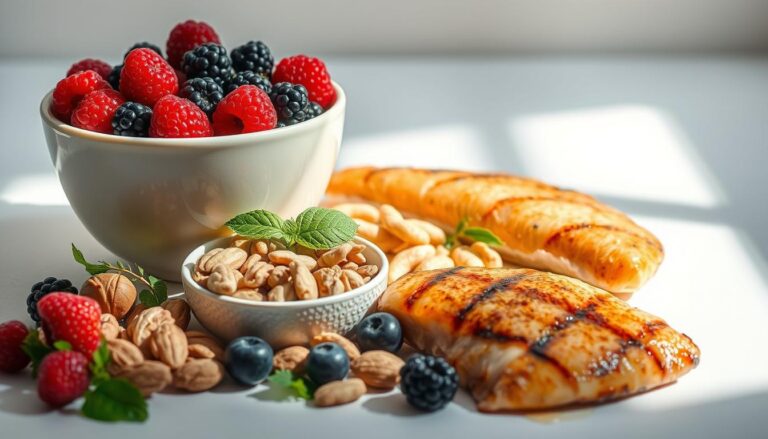Are you in search of a delicious and satisfying meal plan that can help alleviate symptoms of metabolic syndrome?
Look no further! Our sugar-free, anti-inflammatory meal plan is designed specifically to support your journey towards better health. Say goodbye to inflammation and embrace a nourishing and flavorful way of eating.
Metabolic syndrome is a complex condition characterized by a cluster of health issues including obesity high blood pressure insulin resistance, and inflammation.
By following a carefully curated meal plan that eliminates sugar and incorporates anti inflammatory foods you can take significant steps towards managing your symptoms and improving your overall well being.
Get ready to embark on a 7 day journey filled with delicious and nutritious meals that will leave you feeling energized and satisfied. Discover how you can easily incorporate anti-inflammatory ingredients into your diet and experience the transformative effects of this sugar free approach.
Are you ready to reclaim your health and banish inflammation? Let’s dive into our comprehensive sugar free anti-inflammatory meal plan and discover the power of healing through food.
Key Takeaways:
- Our sugar free anti-inflammatory meal plan is specifically designed to alleviate symptoms of metabolic syndrome.
- Eliminating sugar and incorporating anti-inflammatory foods can significantly improve your overall well-being.
- Discover how this meal plan can help you reclaim your health and banish inflammation.
Understanding the Sugar Free Approach to Anti Inflammatory Eating

Sugar plays a significant role in our diet, but its excessive consumption can have detrimental effects on our health. One of the major concerns associated with sugar is its connection to inflammation.
When consumed in excess, sugar can trigger chronic low grade inflammation in the body, contributing to the development of various health conditions.
The Connection Between Sugar and Inflammation
Scientific research has established a clear link between sugar and inflammation. Excess sugar consumption leads to increased levels of pro-inflammatory molecules in the body such as cytokines and chemokines.
These inflammatory markers can contribute to the development of chronic diseases, including metabolic syndrome, diabetes cardiovascular disease, and obesity.
Natural Sugars Versus Added Sugars
Not all sugars are created equal. Natural sugars, found in whole foods like fruits, vegetables, and dairy products come bundled with essential nutrients and fiber that slow down their absorption in the body.
On the other hand added sugars, which are commonly found in processed foods and sugary beverages, contribute empty calories and are quickly absorbed, leading to sharp increases in blood sugar levels.
Benefits of a Sugar Free Diet on Metabolic Syndrome
For individuals with metabolic syndrome, adopting a sugar-free diet can offer significant benefits. Metabolic syndrome encompasses a cluster of conditions such as obesity high blood pressure, high blood sugar, and abnormal cholesterol levels.
By eliminating added sugars from the diet, individuals with metabolic syndrome can regulate their blood sugar levels, reduce inflammation, and improve their overall metabolic health.
By understanding the detrimental effects of sugar and the benefits of a sugar free diet, individuals can make informed choices to improve their health and combat the inflammation associated with conditions like metabolic syndrome.
Essential Components of an Anti-Inflammatory Diet
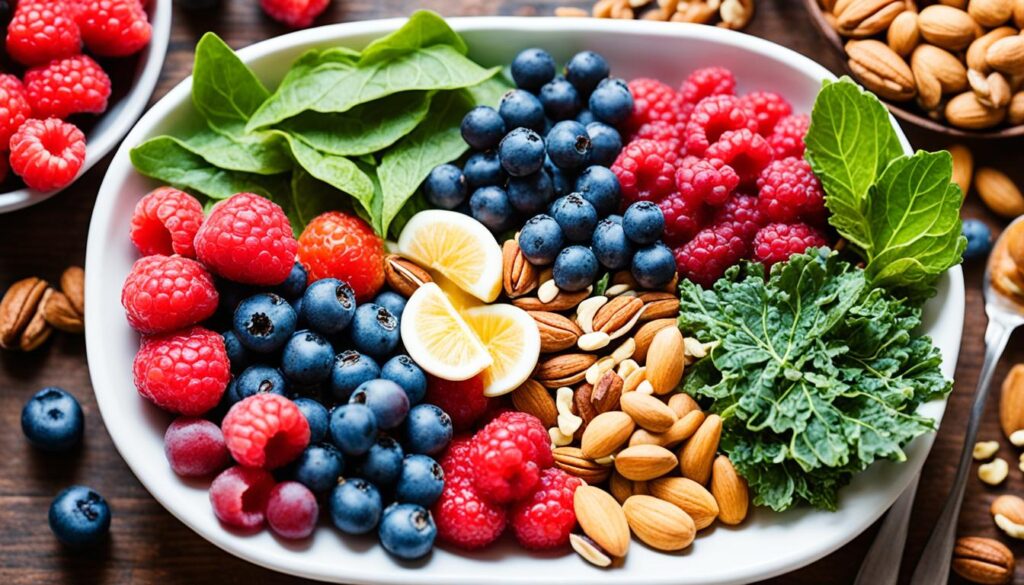
When it comes to combating inflammation, following an anti-inflammatory diet is crucial. By incorporating specific foods into your meals, you can help reduce inflammation in the body and promote overall health. The essential components of an anti-inflammatory diet include:
- Fruits: Enjoy a variety of fruits rich in antioxidants and anti-inflammatory properties. Some examples include berries, citrus fruits, and cherries. They are not only delicious but also beneficial for fighting inflammation.
- Vegetables: Include a colorful array of vegetables in your diet, such as leafy greens, broccoli, bell peppers, and sweet potatoes. These veggies are packed with vitamins, minerals, and phytonutrients that support a healthy inflammatory response in the body.
- Whole Grains: Opt for whole grains like quinoa, brown rice, and oats, which provide fiber and nutrients without causing inflammation. They can be an excellent source of energy and a staple in an anti-inflammatory meal plan.
- Lean Proteins: Choose lean protein sources like chicken, turkey, fish, and legumes. These foods provide essential amino acids for muscle repair and growth without contributing to inflammation.
- Healthy Fats: Incorporate healthy fats from sources like avocados, olive oil, nuts, and seeds. These fats contain omega-3 fatty acids and other anti-inflammatory compounds that promote heart health and reduce inflammation in the body.
- Herbs and Spices: Enhance the flavor of your dishes with herbs and spices like turmeric, ginger, garlic, and cinnamon. They not only add a delicious taste but also possess anti-inflammatory properties that can benefit your health.
By including these essential components in your anti-inflammatory diet, you can take significant steps towards reducing inflammation and promoting overall well being. Remember to choose high-quality, whole foods and experiment with flavors and recipes to make your meals enjoyable and nourishing.
Strategies for Effective Meal Planning and Prep
Meal planning and preparation are essential for successfully following an anti-inflammatory meal plan. By organizing your grocery list, preparing snacks and meals in advance, and implementing flexible meal planning, you can set yourself up for success in maintaining a healthy and nutritious diet.
Organizing Your Grocery List for Anti-Inflammatory Success
An organized grocery list is key to ensuring you have all the necessary ingredients to create delicious and anti-inflammatory meals throughout the week. Here are some tips to help you organize your shopping list:
- Plan your meals: Take some time to plan your meals for the week. This will help you identify the ingredients you need and avoid any unnecessary purchases.
- Group ingredients by category: Organize your grocery list by grouping similar ingredients together. This will make it easier to navigate the store and ensure you don’t forget anything.
- Check your pantry: Before heading to the store, take inventory of what you already have in your pantry. This will help you avoid buying duplicate items and save money.
- Stick to the perimeter: The perimeter of the grocery store is where you’ll find fresh produce, meats, and dairy products. Focus on filling your cart with these anti-inflammatory foods.
By organizing and following your grocery list, you’ll be well-prepared to create delicious and nutritious meals that support your anti-inflammatory goals.
Preparing Snacks and Meals in Advance
Preparing snacks and meals in advance can be a game-changer when it comes to sticking to your anti-inflammatory meal plan. Spending a little time each week prepping and cooking can save you time and stress during busy days. Here are some tips for prepping in advance:
- Create meal-prep friendly recipes: Look for recipes that can be easily made in bulk and stored for future meals. This can include soups, stews, and casseroles.
- Use quality storage containers: Invest in good quality storage containers that are freezer and microwave-safe. This will help keep your prepped meals fresh and easy to reheat.
- Set aside time for prep: Dedicate a specific time each week for meal prep. This could be on the weekend or a quieter evening during the week. Making it a routine will ensure you stay consistent.
By preparing snacks and meals in advance, you’ll always have nutritious options readily available, making it easier to stick to your anti-inflammatory meal plan.
Flexible Meal Planning for Diverse Nutritional Needs
Flexibility is key when it comes to meal planning, especially if you have diverse nutritional needs or dietary restrictions. Here are some strategies for adapting your meal plan to suit your specific requirements:
- Swap ingredients: If you have allergies or dietary restrictions, be open to swapping ingredients in recipes. Look for suitable alternatives that can still provide the essential nutrients your body needs.
- Portion control: If you’re looking to manage your calorie intake, portion control is essential. Be mindful of the serving sizes and adjust them to meet your individual needs.
- Include variety: Incorporate a variety of fruits, vegetables, and proteins to ensure you’re getting a diverse range of nutrients. Experiment with different flavors and textures to keep your meals interesting.
Remember, there’s no one size fits-all approach to meal planning. Embrace flexibility and make adjustments as needed to create a meal plan that works for you and your unique nutritional needs.
| Benefits of Meal Planning and Prep | How to Achieve Them |
|---|---|
| Saves time and reduces stress | Plan your meals, create a grocery list, and set aside dedicated prep time each week. |
| Promotes healthier food choices | Focus on incorporating fresh produce, lean proteins, and whole grains into your meal plan. |
| Helps with portion control and calorie management | Measure out portion sizes and be mindful of your calorie needs. |
| Reduces food waste | Plan meals using ingredients you already have and store leftovers for future meals. |
| Provides flexibility and convenience | Prepare snacks and meals in advance to have nutritious options readily available. |
Sugar free 7 day anti inflammatory meal plan for metabolic syndrome
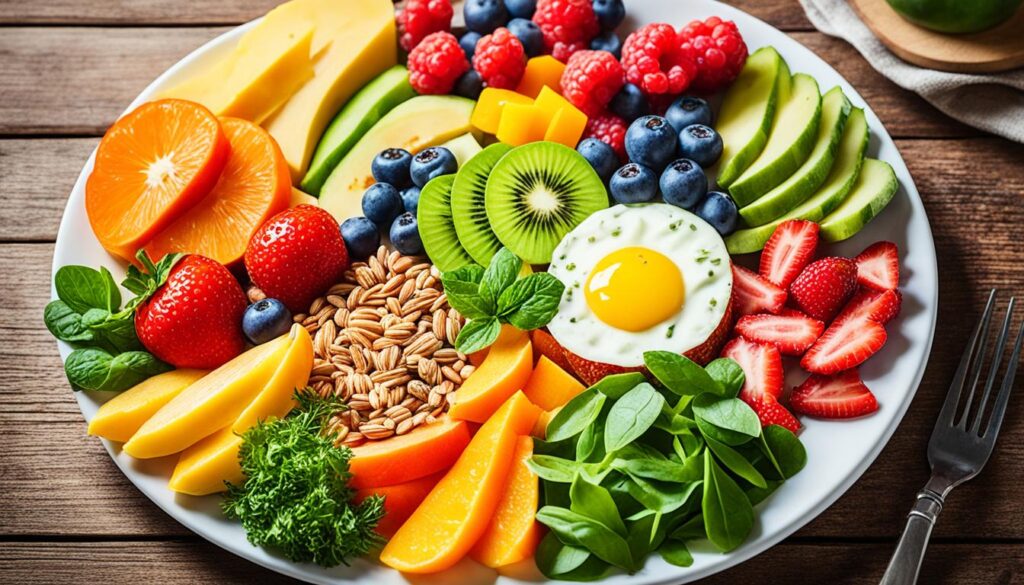
Are you ready to kick-start your journey towards better health and manage your metabolic syndrome? This 7-day sugar-free and anti-inflammatory meal plan is specifically designed to nourish your body, reduce inflammation, and support your overall well-being.
Following a sugar free meal plan can help stabilize blood sugar levels and reduce the risk of inflammation associated with metabolic syndrome. By incorporating anti-inflammatory foods, you’ll provide your body with the essential nutrients it needs to combat inflammation and promote optimal health.
Each day of this meal plan is thoughtfully crafted to ensure you have a variety of delicious options for breakfast, lunch, dinner, and snacks. Here’s a sneak peek into what your week could look like:
Day 1:
- Breakfast: Veggie omelet with spinach, bell peppers, and avocado.
- Lunch: Quinoa salad with mixed greens, cherry tomatoes, and grilled chicken.
- Dinner: Baked salmon with roasted asparagus and cauliflower rice.
- Snack: Greek yogurt with berries and a sprinkle of nuts.
Day 2:
- Breakfast: Chia seed pudding with coconut milk and topped with fresh berries.
- Lunch: Grilled chicken salad with mixed greens, cucumbers, and a lemon vinaigrette dressing.
- Dinner: Turkey meatballs with zucchini noodles and tomato sauce.
- Snack: Sliced cucumbers with hummus.
Day 3:
- Breakfast: Green smoothie with spinach, kale, banana, and almond milk.
- Lunch: Quinoa-stuffed bell peppers with black beans and corn.
- Dinner: Grilled shrimp skewers with a side of steamed broccoli and brown rice.
- Snack: Apple slices with almond butter.
Continuing with this pattern, the meal plan for the remaining four days offers a diverse range of nutrient rich options to keep your taste buds satisfied while supporting your health goals.
As you follow this meal plan, remember to adjust portion sizes based on your individual caloric needs and consult with a healthcare professional or registered dietitian for personalized guidance.
Now that you have a glimpse into this sugar-free, anti-inflammatory meal plan, you’re equipped with the tools to embark on your journey towards better health. Don’t let metabolic syndrome hold you back – prioritize your well-being and nourish your body with the right foods. With this meal plan, delicious and nutritious meals await you every day.
Stay motivated, make mindful choices, and embrace the power of food as medicine to alleviate inflammation and support your overall health.
Caloric Modifications for Different Dietary Needs
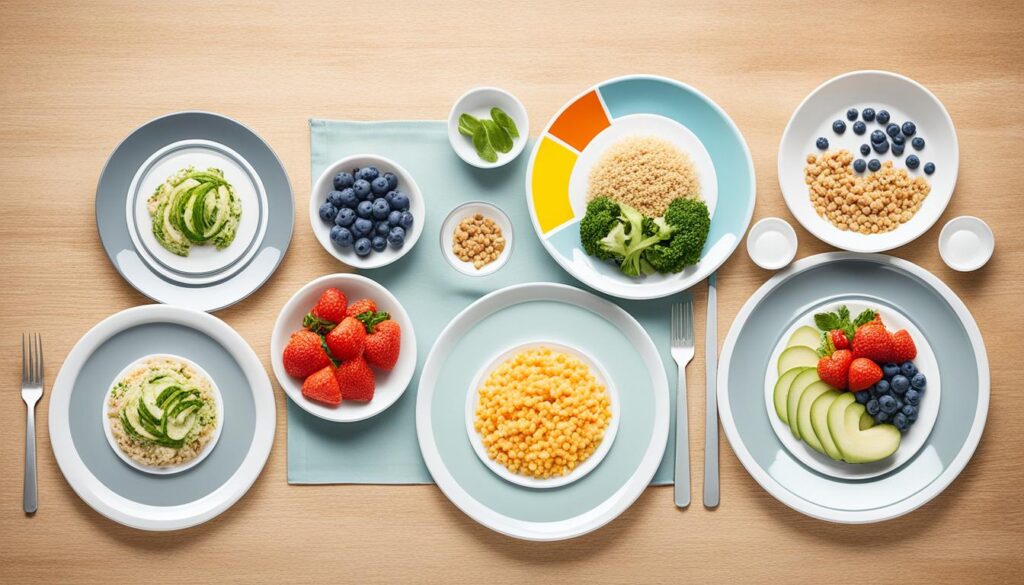
In order to meet individual dietary needs, caloric modifications may be necessary when following the sugar free, anti-inflammatory meal plan. Whether the goal is weight loss, maintaining satiety, or accommodating an active lifestyle with higher metabolic demands, there are strategies to adjust the meal plan accordingly.
Adjusting for Weight Loss Goals
For individuals looking to lose weight while following the meal plan, it’s important to create a caloric deficit. This can be achieved by reducing portion sizes, choosing lower-calorie alternatives for certain ingredients, or eliminating high-calorie snacks.
It’s crucial to maintain the nutritional value of the meals even while reducing overall caloric intake. This ensures that essential nutrients are still provided to support overall health and well-being.
Maintaining Satiety with High-Protein Options
Protein is known to promote feelings of satiety, making it an important macronutrient to include in the meal plan. Consider incorporating high protein options such as lean meats, poultry, fish, legumes, and tofu.
These protein-rich foods will help keep you feeling satisfied throughout the day, preventing excessive snacking or overeating. Additionally, protein plays a crucial role in supporting muscle growth and repair important factors for individuals with an active lifestyle or higher metabolic demands.
Scaling Up for Active Lifestyles or Higher Metabolic Demands
For individuals with active lifestyles or higher metabolic demands, it may be necessary to scale up the meal plan to ensure adequate energy intake.
This can be achieved by increasing portion sizes, adding an extra snack or meal, or including energy dense ingredients such as healthy fats and complex carbohydrates. It’s important to listen to your body’s needs and adjust accordingly to support your activity level and overall well-being.
| Caloric Modification | Description |
|---|---|
| Adjusting for Weight Loss Goals | Reducing portion sizes, choosing lower-calorie alternatives, and eliminating high-calorie snacks to create a caloric deficit for weight loss. |
| Maintaining Satiety with High-Protein Options | Including protein-rich foods like lean meats, poultry, fish, legumes, and tofu to promote feelings of fullness and support muscle growth and repair. |
| Scaling Up for Active Lifestyles or Higher Metabolic Demands | Increasing portion sizes, adding extra snacks or meals, and including energy dense ingredients to meet the higher energy needs of active individuals. |
Highlighting Anti Inflammatory Superfoods and Ingredients

When it comes to reducing inflammation, certain foods pack a powerful punch. Incorporating these anti-inflammatory superfoods and ingredients into your meal plan can provide numerous health benefits and optimize your body’s healing process. Let’s explore some of these nutritional superheroes and how they can enhance your anti-inflammatory journey.
To start, one of the most well-known anti-inflammatory superfoods is turmeric. This vibrant spice contains curcumin, a compound known for its potent anti-inflammatory properties. Including turmeric in your meals, such as in curries or golden milk, can help alleviate inflammation throughout your body.
Another superstar ingredient is ginger. With its zesty flavor and medicinal properties, ginger has been used for centuries to reduce inflammation and ease digestive discomfort. Adding fresh ginger to stir-fries, smoothies, or teas is a fantastic way to incorporate its therapeutic benefits.
Berries, particularly blueberries, deserve a spot on your anti-inflammatory plate. Bursting with antioxidants and phytochemicals, berries have been shown to reduce inflammation and oxidative stress. Enjoy them as a snack, in smoothies, or as a topping for your favorite breakfast bowl.
Fatty fish, such as salmon, mackerel, and sardines, are excellent sources of omega-3 fatty acids. These healthy fats help lower inflammation and promote heart health. Grilling or baking fish and pairing it with a side of leafy greens can provide a delicious and anti-inflammatory meal.
Leafy greens like spinach and kale are nutritional powerhouses, loaded with antioxidants and essential vitamins. These veggies help combat inflammation and support overall health. Incorporate them into salads, sautés, and smoothies to keep your body happy and inflammation at bay.
Adding vibrant fruits, like pineapple and papaya, to your meals can also have fantastic anti-inflammatory effects. These fruits contain bromelain and papain, enzymes known for their inflammation-fighting properties. Enjoy them fresh or toss them into a tropical fruit salad for a refreshing and anti-inflammatory treat.
The list of anti-inflammatory superfoods and ingredients doesn’t end here. Cinnamon, garlic, olive oil, green tea, and many more can all contribute to reducing inflammation in your body. Experiment with different flavors and incorporate these ingredients into your meals to add a burst of anti-inflammatory goodness.
By including these anti-inflammatory superfoods and ingredients in your meal plan, you can harness the power of nutrition to fight inflammation from within. Remember, each bite you take is an opportunity to nourish your body and promote optimal health.
So, let’s load up our plates with these nutritious superstars and conquer inflammation one delicious meal at a time!
Navigating Challenges and Staying Motivated
Following a sugar-free, anti-inflammatory meal plan for metabolic syndrome can come with its fair share of challenges. But don’t fret! With the right strategies and mindset, you can overcome these hurdles and stay motivated on your journey to better health.
Curbing Sugar Cravings While Satisfying the Sweet Tooth
Sugar cravings can be tough to resist, especially when you’re transitioning to a sugar free diet. But fear not! There are plenty of delicious and healthy alternatives to satisfy your sweet tooth without derailing your progress.
Consider trying naturally sweet fruits like strawberries, blueberries, and apples. These fruits provide a natural dose of sweetness along with fiber and antioxidants to support your inflammation-fighting goals.
You can also experiment with spices like cinnamon, nutmeg, and vanilla to add a touch of sweetness to your meals and beverages. These spices can enhance the flavors of other ingredients and give your taste buds a delightful treat.
When cravings strike, divert your attention to other activities that bring you joy or relaxation. Take a walk, do a hobby, or enjoy a conversation with a loved one to occupy your mind and distract yourself from the tempting allure of sugary treats.
Incorporating Flexibility Without Derailing Progress
Flexibility is essential for long-term success when following any meal plan. Allow yourself the freedom to make adjustments and modifications to fit your personal preferences and lifestyle.
While it’s important to stick to the foundational principles of the sugar free, anti-inflammatory meal plan, don’t be afraid to add variety to your meals and experiment with different ingredients and flavors.
Find alternative recipes and substitute certain ingredients to keep things interesting. Maybe try a new vegetable or spice you haven’t used before. Adding diversity to your meals can help prevent boredom and keep you motivated to stay on track.
Support Systems and Tracking Results for Long-Term Success
It’s easier to stay motivated when you have a support system cheering you on. Surround yourself with family members, friends, or online communities who share a similar health journey. Their encouragement, advice, and shared experiences can be a great source of motivation and accountability.
Additionally, don’t underestimate the power of tracking your progress. Keep a food journal or use a tracking app to log your meals, exercise, and how you feel each day. Seeing tangible evidence of your progress can be incredibly motivating and help you stay committed to your goals.
Remember, overcoming challenges and staying motivated is a journey. Be kind to yourself, celebrate small victories, and don’t let setbacks discourage you. With determination, resilience, and the right mindset, you have the power to achieve incredible results on your sugar-free, anti-inflammatory meal plan.
Conclusion
The sugar-free, anti-inflammatory meal plan for individuals with metabolic syndrome offers a flavorful and nutritious approach to improving overall health. By eliminating added sugars and incorporating inflammation-fighting foods, this meal plan can help reduce chronic low-grade inflammation and address the underlying causes of metabolic syndrome.
Throughout this 7-day meal plan, you have discovered a variety of delicious recipes and learned how to navigate challenges while staying motivated. The inclusion of anti-inflammatory superfoods and ingredients has provided your body with essential nutrients and antioxidants to support optimal health.
Remember, adopting a sugar free, anti-inflammatory lifestyle is a journey. By making small changes and following this meal plan, you are taking the first steps towards lasting health and well-being.
Listen to your body, honor your taste buds, and be flexible with your choices. Seek support systems and celebrate your progress along the way. Maintaining a balanced, anti-inflammatory diet will help you achieve your goals and live a vibrant, sugar free life.
